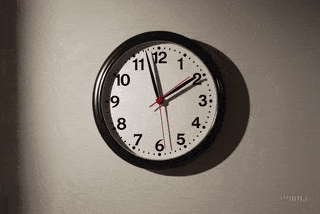There’s an old saying in investing: “The best time to plant a tree was 20 years ago. The second-best time is today.” That principle applies tenfold to your money. Because when it comes to compounding, time matters far more than size. The biggest mistake most people make isn’t investing too little—it’s waiting too long to invest anything at all.
Most people underestimate just how powerful their first dollars can be. They believe they need to save up a large amount, learn the market, or time their entry perfectly. In doing so, they miss the most valuable window of all: the beginning. The truth is, your first $1,000 invested has more impact on your long-term wealth than the next $10,000—if it’s given time to grow.
Let’s break this down with simple math, not theory. If you invest $1,000 today and it compounds at a modest 7% annual return, in 40 years that grows to nearly $15,000. But if you wait 10 years and invest $10,000 instead, you end up with about the same amount. The first $1,000 earned you 15x without doing anything—because it had time on its side. That’s the secret to long-term investing. It doesn’t reward those who do more. It rewards those who start sooner.
The power of compounding is the single greatest financial force available to everyday investors. It turns small beginnings into large outcomes—quietly, patiently. But it only works if you give it the time it needs. That’s why I often tell people, "Don’t wait for perfect conditions. Start now, with whatever you can." Because the market doesn’t wait, and neither does inflation.
Which brings us to another truth: cash loses value while assets gain it. If you leave your $1,000 sitting in a savings account earning less than 1%, you’re not just earning slowly—you’re losing purchasing power each year. Inflation quietly eats away at idle cash, while even conservative investments can outpace it. That’s why starting to invest early is less about chasing returns and more about preserving time.
You don’t need to predict the market to do well. You don’t need to beat the pros. All you need is discipline, patience, and a system that keeps you invested through the noise. That’s where platforms like Openvest come in. They offer automated investing with flat-fee pricing, making it easier to start with small amounts and stay consistent. No hidden percentage fees. No confusing jargon. Just long-term alignment.

Time Is the Investor’s Greatest Advantage
Here’s something I’ve learned over decades of investing: it’s not timing that builds wealth—it’s time. The investor who starts early and stays the course will outperform nearly anyone, even those with larger incomes or flashier portfolios. That’s because compounding doesn’t care about your status. It cares about your habits.
Let’s say you invest $1,000 at age 22 and let it sit. Then, you invest nothing else. Compare that to someone who starts at 32 and contributes $1,000 every year for a decade. Believe it or not, the first person can still come out ahead. That’s the value of a head start. That’s the kind of insight that’s easy to overlook when you’re focused on how much you can invest instead of how early you can.
This is why I always recommend starting small—but starting now. You don’t need to wait until you feel rich. Investing for beginners isn’t about finding the best stock or strategy—it’s about understanding the nature of compounding and putting it to work as soon as possible. Your first $1,000 isn’t just capital—it’s a down payment on freedom.
And there’s something else worth considering: your early investments don’t just grow your money. They grow your mindset. They train you to think long-term, ignore noise, and act like an owner instead of a spender. That shift—from consumer to investor—is where real wealth begins. Not in big wins, but in small, consistent decisions repeated over time.
With platforms like Openvest, that consistency is easier than ever. Their flat-fee investing model ensures you’re not punished for growing your portfolio. Unlike traditional advisors who charge 1% of your assets annually, Openvest charges a transparent, fixed fee. That means as your wealth compounds, you keep more of it. And that’s exactly how the rich protect and scale their capital—by minimizing friction and aligning incentives.
So here’s the bottom line: your first $1,000 isn’t small. It’s the most powerful investment you’ll ever make—not because of the amount, but because of the time it buys. Start there. Automate it. Add to it when you can. And then step back. The hard part isn’t choosing the best investment—it’s sticking with it long enough to let the math do all of the work.
